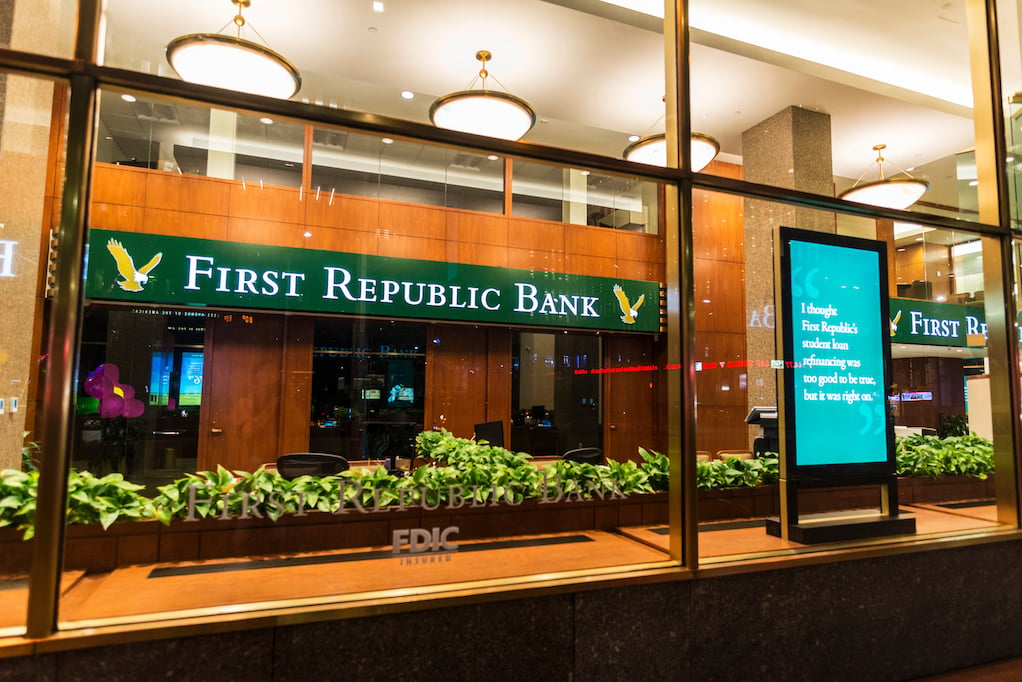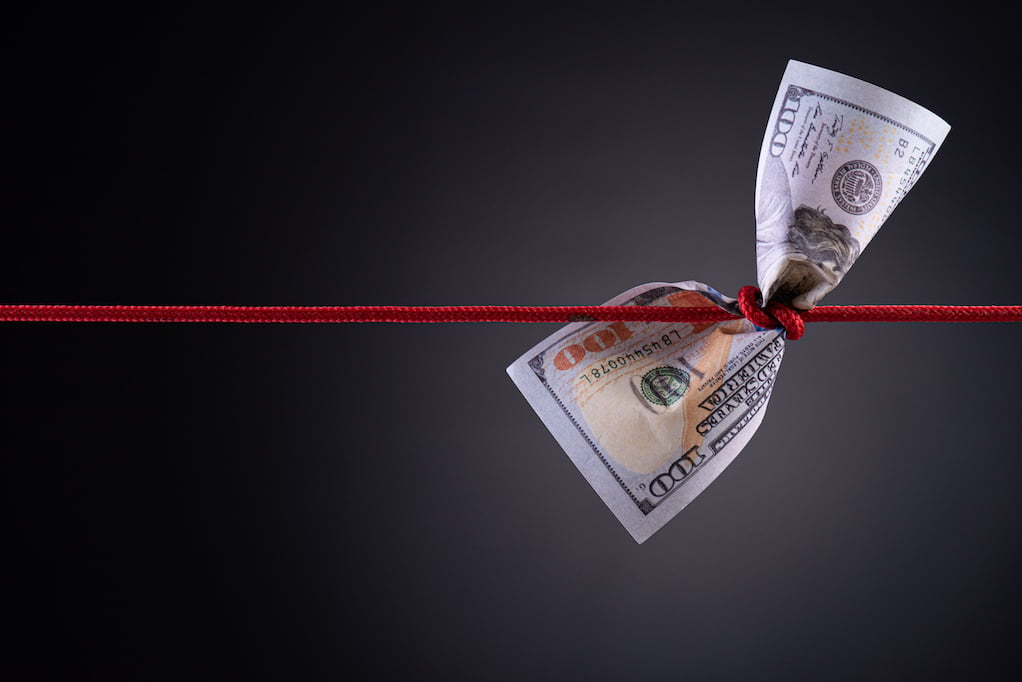The WFH Revolution has fundamentally transformed the commercial real estate industry, leaving landlords and tenants alike struggling to adapt to a new normal. The once-booming industry is now facing a time of unprecedented volatility, with occupancy rates plummeting and investors pulling out of the most significant REIT firms. Against this backdrop, a midsize bank, First Republic Bank, was recently bailed out by a joint rescue deposit from the 11 largest banks in the country, underscoring the looming danger for the commercial real estate industry.
The worst part is? Bailouts like this were most likely only a matter of time… and a greater indicator of what’s to come. Read on.
Power Imbalance Between Commercial Tenants and Landlords
With low demand and high interest rates and inflation, landlords are being forced to compete to lure in new tenants in an era where remote work capabilities have stalled office demand.
With a significant portion of the workforce now working remotely, demand for office space has dwindled, leading to rising vacancies as occupancy rates dwindle. The situation is putting tenants in a strong bargaining position, allowing them to drive harder deals. On the inverse, landlords are struggling to attract new tenants for pre-pandemic rates in an era where office demand has stalled due to remote work capabilities.
However, the situation is not sustainable in the long run. This shift has put immense pressure on the commercial real estate industry. Some landlords have been unable to uphold their expenses and are handing back the keys to the bank, unhopeful for the future of CRE. All this further contributes to the growing number of commercial properties going into default.
Furthermore, with investor interest waning, many of the country’s largest real estate investment trusts (REITs) have seen a significant pullback in investment, indicating a looming danger for the industry.
|
“Even strong, well capitalized financial institutions are likely to constrict lending until there is further market clarity and stability.” -Noah Grayson, Real Estate Bees |
Danger for the Banks
All this culminates in an unpleasant likely end: a bank bailout. (That may already have been set into motion, and where our story began).
Commercial real estate loan originator, First Republic Bank was the fourteenth largest bank in the country, with assets totaling $212.6 billion. However as discussed, CRE institutions have taken a substantial hit. Presumably enough landlords defaulted on their loans to trigger an emergency bailout situation.

A joint force comprised of the 11 largest banks in the country, Bank of America, Citigroup, JPMorgan Chase, Wells Fargo, Goldman Sachs Morgan Stanley, BNY-Mellon, PNC Bank, State Street, Trust and U.S. Bank, pooled resources to avoid a catastrophic scenario. Each put in from $1 billion to $5 billion to total a $30 billion deposit to avoid the possibility of a bank run and support any withdrawals of deposits.
A joint statement from the bank stronghold explained, "Together, we are deploying our financial strength and liquidity into the larger system, where it is needed the most. Smaller- and medium-sized banks to support their local customers and businesses, create millions of jobs and help uplift communities. America’s larger banks stand united with all banks to support our economy and all of those around us.”
This comes at a time when Americans were questioning the solid ground our institutions stand on. If the largest banks are spooling up to protect smaller, midsized banks, this could potentially be a very real harbinger of further issues on the horizon. They see how dire the situation is getting and are willing to do damage control before it gets worse, fast.
|
“The recent declines in bank asset values very significantly increased the fragility of the U.S. banking system to uninsured depositor runs.” Study, "Monetary Tightening and U.S. Bank Fragility in 2023: Mark-to-Market Losses and Uninsured Depositor Runs?" |
A very real bank collapse may be being foreshadowed right now. First Republic Banks crisis comes among the collapse of Silicon Valley Bank. Now, USA Today predicts that ~190 banks can face the same fate.
Now, we don't know about you, but we're feeling déjà vu all over again. In 2008, commercial loans seized up like an engine without oil. We may be on a crash course for the same fate.
The Bank Crisis' Influence on CRE Future for Tenants
With financial ruin on the horizon, it’s not likely that many new major development projects will take place. Construction projects will likely slow to confront low demand and waning investor interest. This is also true because obtaining loans will become more difficult. With so much stress on banks, they’re largely unwilling to fund projects they can’t see an immediate return on…. And with office occupancy rates stalling, what do you think banks don’t see an immediate investment returning upon?
“Borrowers can expect increasing difficulty in the coming weeks and months obtaining new commercial real estate financing, extending or refinancing existing real estate financing, and accessing financing draws for ongoing construction projects,” according to GlobeST.
So, perhaps slowing construction will close the gap in the meantime between office availability and demand. But, the recent bank collapse among other crises have set irreversible ripples into action throughout the CRE field. When a major CRE loan originator can’t pay its bills, this spells trouble for everyone, though the final ending stands up for debate currently.

But, commercial tenants should be prepared for the very real possibility that their landlord may be in for trouble. With landlord defaults on the rise triggering banking crises, there’s never been a better time for tenants to get specific about their CRE costs. Benchmark your lease to market. This will allow you to compare the probable performance of your building and landlord to properties in your area. To read more about how landlords are handing back their keys (and how this affects you, the corporate tenant) check out: Office Landlord Debts and Defaults are on the Rise.
Also, review your leases to identify how much financial coverage you have in the event your landlord defaults. Keep detailed records of all lease-related documents, including the original lease agreement, amendments, rent receipts, and any correspondence with the landlord. These records can provide valuable evidence to support your rights as a tenant in the event of a landlord default.
And, if you’re looking to sign a new lease, make certain that you obtain a non-disturbance agreement. A non-disturbance agreement (NDA) is an arrangement between the tenant, landlord, and the landlord's lender. It ensures that the tenant's rights to the leased premises are preserved in the event of a landlord default or foreclosure. By obtaining an NDA, you can continue to occupy the property under the existing lease terms even if the landlord loses ownership. You can also take it one step further by obtaining an SNDA, but you should work with your attorney to ensure you have a proper SNDA clause.
Protect Your CRE With a True Tenant Rep™
The current market conditions have created an environment of uncertainty and volatility for tenants looking to secure a lease for office space. It’s more important than ever for tenants to work with experienced tenant representatives who can help them navigate the complex commercial real estate landscape and secure the best possible terms for their lease.
Working with a tenant representative can help tenants secure a lease that meets their specific needs while keeping their budget in mind. They can help tenants understand the different types of leases, the various lease terms, and the options available to them. Tenant representatives can also provide valuable insights into the local market, such as vacancy rates, rent prices, and upcoming developments.
At iOptimize Realty®, we understand the challenges that commercial real estate tenants are facing in today's environment. Our team of True Tenant Reps™ have 30+ years of experience navigating complex lease deals and negotiating on behalf of our corporate clients, often saving them up to 30% of their CRE costs. We take pride in providing personalized service to our clients, ensuring that their interests are protected every step of the way.
In conclusion, the current state of the commercial real estate industry is precarious, with signs of danger on the horizon. As tenants look to navigate this volatile market, the help of a True Tenant Rep™ is more valuable than ever. By partnering with iOptimize Realty®, commercial tenants can secure the best possible deal and protect their interests in a time of great uncertainty. If you're 







